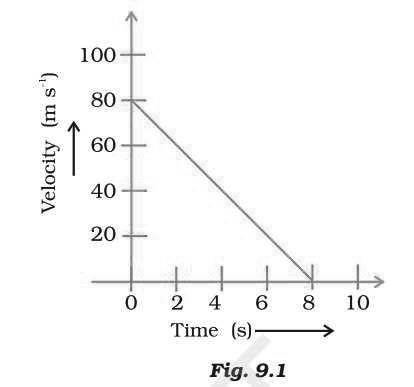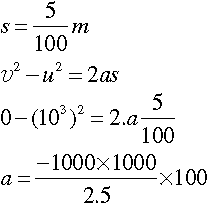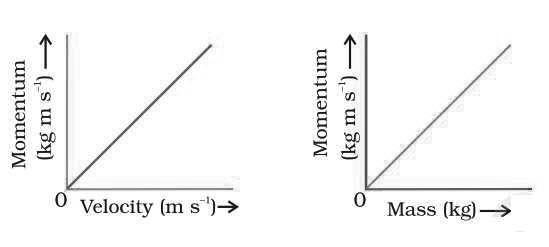Read and download free pdf of CBSE Class 9 Physics Force And Laws Of Motion Worksheet Set C. Students and teachers of Class 9 Science can get free printable Worksheets for Class 9 Science Chapter 8 Force and Laws of Motion in PDF format prepared as per the latest syllabus and examination pattern in your schools. Class 9 students should practice questions and answers given here for Science in Class 9 which will help them to improve your knowledge of all important chapters and its topics. Students should also download free pdf of Class 9 Science Worksheets prepared by teachers as per the latest Science books and syllabus issued this academic year and solve important problems with solutions on daily basis to get more score in school exams and tests
Worksheet for Class 9 Science Chapter 8 Force and Laws of Motion
Class 9 Science students should download to the following Chapter 8 Force and Laws of Motion Class 9 worksheet in PDF. This test paper with questions and answers for Class 9 will be very useful for exams and help you to score good marks
Class 9 Science Worksheet for Chapter 8 Force and Laws of Motion
Question: A passenger in a moving train tosses a coin which falls behind him. It means that motion of the train is
a) accelerated
b) uniform
c) retarded
d) along circular tracks
Answer: a
Question: Rocket works on the principle of conservation of
a) mass
b) energy
c) momentum
d) velocity
Answer: c
Question: Which of the following statement is not correct for an object moving along a straight path in an accelerated motion?
a) Its speed keeps changing
b) Its velocity always changes
c) It always goes away from the earth
d) A force is always acting on it
Answer: c
Question: A goalkeeper in a game of football pulls his hands backwards after holding the ball shot at the goal. This enables the goal keeper to
a) exert larger force on the ball
b) reduce the force exerted by the ball on hands
c) increase the rate of change of momentum
d) decrease the rate of change of momentum
Answer: b
Question: An object of mass 2 kg is sliding with a constant velocity of 4 ms–1 on a frictionless horizontal table. The force required to keep the object moving with the same velocity is
a) 32 N
b) 0 N
c) 2 N
d) 8 N
Answer: b
Question: The inertia of an object tends to cause the object
a) to increase its speed
b) to decrease its speed
c) to resist any change in its state of motion
d) to decelerate due to friction
Answer: c
Question: According to the third law of motion, action and reaction
a) always act on the same body
b) always act on different bodies in opposite directions
c) have same magnitude and directions
d) act on either body at normal to each other
Answer: b
Question: Two identical bullets are fired one by a light rifle and another by a heavy rifle with the same force. Which rifle will hurt the shoulder more and why?
Answer: According to law of conservation of momentum; the momentum of bullet will be equal to the momentum of rifle. In case of light rifle; velocity will be more than the velocity of heavier rifle so that momentum (product of mass and velocity) for both shall be equal. Due to this, the lighter rifle will hurt the shoulder more.
Question: There are three solids made up of aluminium, steel and wood, of the same shape and same volume. Which of them would have highest inertia?
Answer: Steel- As the mass is a measure of inertia, the ball of same shape and size, having more mass than other balls will have highest inertia. Since steel has greatest density and greatest mass, therefore, it has highest inertia.
Question: Suppose a ball of mass m is thrown vertically upward with an initial speed v, its speed decreases continuously till it becomes zero. Thereafter, the ball begins to fall downward and attains the speed v again before striking the ground. It implies that the magnitude of initial and final momentums of the ball are same. Yet, it is not an example of conservation of momentum. Explain why?
Answer: Law of conservation of momentum is applicable to isolated system (no external force is applied). In this case, the change in velocity is due to the gravitational force of earth.
Question: A horse continues to apply a force in order to move a cart with a constant speed. Explain why?
Answer: When a cart is moving on the road, it has to encounter friction. To maintain a constant speed, some force need to be applied continuously to overcome the friction. Hence, the horse needs to continuously apply a force in order move the cart with a constant speed.
Question: Two balls of the same size but of different materials, rubber and iron are kept on the smooth floor of a moving train. The brakes are applied suddenly to stop the train. Will the balls start rolling? If so, in which direction? Will they move with the same speed? Give reasons for your Answer:
Answer: Yes. the balls will start rolling in the direction in which the train was moving. Due to the application of the brakes, the train comes to rest but due to inertia the balls try to remain in motion, therefore, they begin to roll. Since the masses of the balls are not the same, therefore, the inertial forces are not same on both the balls. Thus, the balls will move with different speeds.
Question: Water sprinkler used for grass lawns begins to rotate as soon as the water is supplied. Explain the principle on which it works.
Answer: The working of the rotation of sprinkler is based on third law of motion. As the water comes out of the nozzle of the sprinkler, an equal and opposite reaction force comes into play. So, the sprinkler starts rotating.
Question: Velocity versus time graph of a ball of mass 50 g rolling on a concrete floor is shown in Fig. 9.1. Calculate the acceleration and frictional force of the floor on the ball.

Answer: Acceleration = a = u – u / t = – 80/8 ms-2 = – 10ms-2
Force = ma = 50 / 1000 x 10 = 0.5N
Question: A truck of mass M is moved under a force F. If the truck is then loaded with an object equal to the mass of the truck and the driving force is halved, then how does the acceleration change?
Answer: Acceleration can be given as follow:
F = ma or a = F/m or a1 = F/M
When mass is doubled and force is halved;
a2 = F/4M or a2/a1 = F/4M ÷ F/M = 1/4
So, acceleration becomes one-fourth.
Question: Derive the unit of force using the second law of motion. A force of 5 N produces an acceleration of 8 ms–2 on a mass m1 and an acceleration of 24 ms–2 on a mass m2. What acceleration would the same force provide if both the masses are tied together?
Answer: F = m a = kg ms-2
This unit is also called newton. Its symbol is N.
m1 = F/a1 = (5/8) kg
m2 = F/a2 = (5/24) kg
M = (5/8 + 5/24) kg = (5/6) kg
Acceleration produced in M,
![]()
Question: Using second law of motion, derive the relation between force and acceleration. A bullet of 10 g strikes a sand-bag at a speed of 103 ms-1 and gets embedded after travelling 5 cm. Calculate
(i) the resistive force exerted by the sand on the bullet
(ii) the time taken by the bullet to come to rest.
Answer: (i) m = 10g g = (10/1000) kg
u =10 m/ s
u = 0

= − 107 ms-2
F = m.a =105 N
(ii) u = u + at
0 = 103 – 107 t
107 t = 103
t = 103/107
= 10-4s
Question: What is momentum? Write its SI unit. Interpret force in terms of momentum. Represent the following graphically.
(a) momentum versus velocity when mass is fixed.
(b) momentum versus mass when velocity is constant
Answer: Momentum = mass × velocity
SI unit of momentum is kg ms-1
Force = Rate of change in momentum

Question: Two friends on roller-skates are standing 5 m apart facing each other. One of them throws a ball of 2 kg towards the other, who catches it, How will this activity affect the position of the two? Explain your Answer:
Answer: Separation between them will increase. Initially the momentum of both of them are zero as they are at rest. In order to conserve the momentum, the one who throws the ball would move backward. The second will experience a net force after catching the ball and therefore will move backwards that is in the direction of the force
| CBSE Class 9 Chemistry Matter In Our Surrounding Worksheet Set A |
| CBSE Class 9 Chemistry Matter In Our Surrounding Worksheet Set B |
| CBSE Class 9 Chemistry Is Matter Around Us Pure Worksheet Set A |
| CBSE Class 9 Chemistry Is Matter Around Us Pure Worksheet Set B |
| CBSE Class 9 Physics Motion Worksheet Set A |
| CBSE Class 9 Physics Motion Worksheet Set B |
| CBSE Class 9 Physics Gravitation Worksheet Set A |
| CBSE Class 9 Physics Gravitation Worksheet Set B |
| CBSE Class 9 Physics Work And Energy Worksheet Set A |
| CBSE Class 9 Physics Work And Energy Worksheet Set B |
| CBSE Class 9 Physics Sound Worksheet Set A |
| CBSE Class 9 Physics Sound Worksheet Set B |
| CBSE Class 9 Physics Sound Worksheet Set C |
| CBSE Class 9 Biology Why Do We Fall Ill Worksheet Set A |
| CBSE Class 9 Biology Why Do We Fall Ill Worksheet Set B |
| CBSE Class 9 Biology Why Do We Fall Ill Worksheet Set C |
| CBSE Class 9 Biology Natural Resources Worksheet Set A |
| CBSE Class 9 Biology Natural Resources Worksheet Set B |
| CBSE Class 9 Biology Natural Resources Worksheet Set C |
Worksheet for CBSE Science Class 9 Chapter 8 Force and Laws of Motion
We hope students liked the above worksheet for Chapter 8 Force and Laws of Motion designed as per the latest syllabus for Class 9 Science released by CBSE. Students of Class 9 should download in Pdf format and practice the questions and solutions given in the above worksheet for Class 9 Science on a daily basis. All the latest worksheets with answers have been developed for Science by referring to the most important and regularly asked topics that the students should learn and practice to get better scores in their class tests and examinations. Expert teachers of studiestoday have referred to the NCERT book for Class 9 Science to develop the Science Class 9 worksheet. After solving the questions given in the worksheet which have been developed as per the latest course books also refer to the NCERT solutions for Class 9 Science designed by our teachers. We have also provided a lot of MCQ questions for Class 9 Science in the worksheet so that you can solve questions relating to all topics given in each chapter.
You can download the CBSE Printable worksheets for Class 9 Science Chapter 8 Force and Laws of Motion for latest session from StudiesToday.com
There is no charge for the Printable worksheets for Class 9 CBSE Science Chapter 8 Force and Laws of Motion you can download everything free
Yes, studiestoday.com provides all latest NCERT Chapter 8 Force and Laws of Motion Class 9 Science test sheets with answers based on the latest books for the current academic session
CBSE Class 9 Science Chapter 8 Force and Laws of Motion worksheets cover all topics as per the latest syllabus for current academic year.
Regular practice with Class 9 Science worksheets can help you understand all concepts better, you can identify weak areas, and improve your speed and accuracy.

